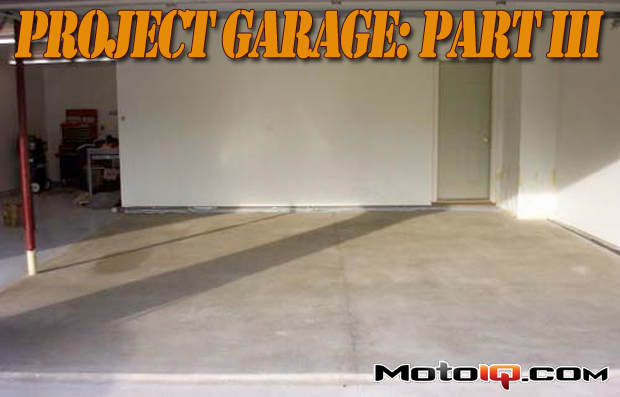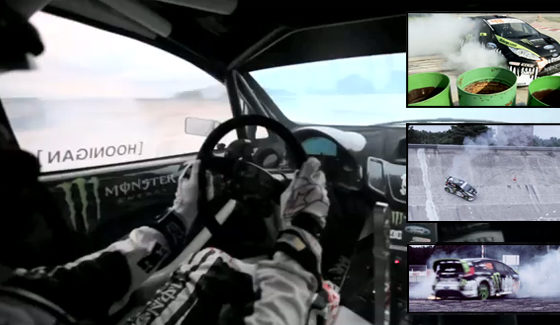 Project Garage, Part 3: New Flooring
Project Garage, Part 3: New Flooring
By Sarah Forst
Last installment’s bright lighting only illuminated how horrible the concrete floors were starting to look. From oil changes and swapping brake rotors to cam installs and shock inserts, Project Garage was getting more business than a Pep Boys Fast and Furious sale.
 |
| Griot’s Garage is like the mecca for car lovers when it comes to “shop”-ping. Try to stay focused or you'll end up with a full cart! |
After doing some research on floor paints and epoxy coating, Griot’s Garage seemed to offer the best non-stick floor option in terms of durability, cleanup, and looks. Not to mention it’s an affordable selection. One gallon covers approximately 130 square feet in two coats. It comes in two colors: gray or tan. Since the concrete must cure for 90 days before it can be painted, that provided 3 months after moving in to scuff up the newly poured concrete floors. Cleanup of this dirty floor would be time-consuming but the thought of using a mop to wipe up spilled oil was much more appealing than the current Simple Green, rags, and crossed fingers method.
The concrete slab should also be checked for ground moisture, especially those slabs that are in direct contact with the ground versus being suspended over an empty space such as a basement. To test for moisture, tape a one square foot piece of clear plastic down to the concrete for 1-2 days. If moisture is present at that time, the floor should not be painted.
 |
| Griot's Garage offers their complete floor paint application kit if you want to one-stop shop. The kit includes two mohair rollers, one heavy duty 9″ Roller Frame, one 5' Extension Pole, a paint mixer, roll of paint masking film, and ten pairs of disposable gloves, though any car enthusiast buys these by the hundreds already! |
The directions were detailed but intimidating. Prepping the concrete is the most important step. If you don't spend the time getting the concrete cleaned and etched, it won't hold the paint well and the finish won't be as nice. The air and concrete temperatures must also be above 50 degrees F for the paint to cure correctly. At least two coats are necessary with the second coat being applied within 24-48 hours of the primer coat.



